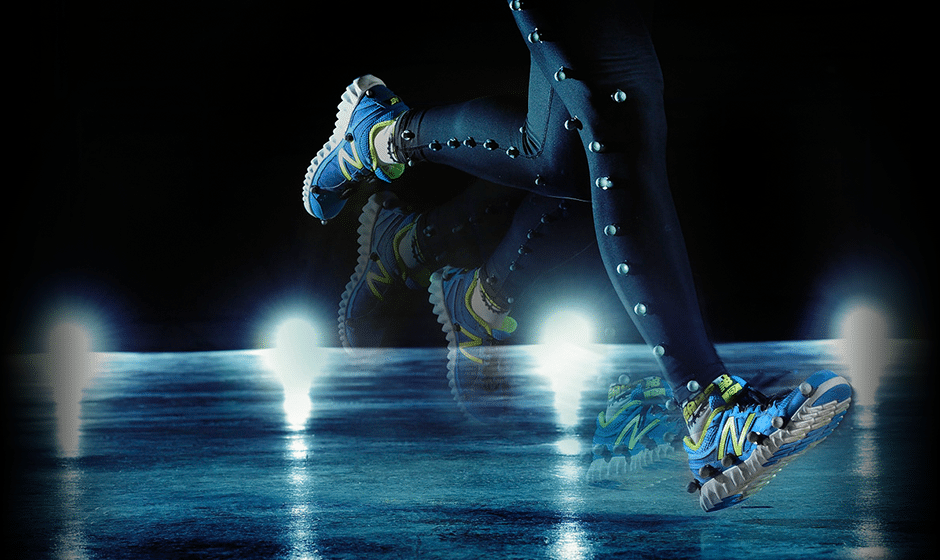
Musculoskeletal properties related to movement effectiveness
Movement effectiveness can be any task i.e. stand-to-sit, lunge, walk etc. For this blog we shall be looking at ‘vertical jumps’.
Jump movements are commonly used as part of the sports-biomechanical research to measure overall power of the lower extremities (Bosco and Komi, 1979; Hunter and Marshall, 2002; Marques and Gonzalez-Badillo, 2011) and as a training task for improving performance and power (Bobbert, 1990; Krol andd Mynarski, 2012). During the jump, there is a complex interaction between three joints; hip, knee and ankle. Anatomically the most important factors to achieve maximal jump coordination, ineffective movements are minimised and effective movements maximised, will depend upon the number of joints a muscle spans, physiological cross section of a muscle (van Soest and Bobbert, 1993), muscle tendon length ratio (Voigt, Simonsen, Dyhre-Poulson and Klausen, 1995; Finni, 2000), length and velocity of muscle contraction (Hill, 1938; Voigt et al., 1995; Fukashiro, Noda and Shibayama, 2001) and the inertia of individual segments (van Ingen Schenau, 1989). Markovic and Jaric (2007) conclude with novel findings based on the stretch-shortening cycle to be partly independent to a sample. Thus, if the pelvic mechanics are compromised, muscle physiology has modified, due to joint position and is now imbalanced, the dynamic integrity of the kinematic chain may be reduced.
Meaning?
The jump task, or any other task given to the subject, will be performed non-optimally.
Are we missing the bigger picture?
If ‘non-optimal’ adaption is happening whilst a person is trying to complete a task, are we not increasing our relative risk of something biological ‘giving way’? If they continue to move non-optimally are we not exposing the individual to more risk of strategising or premature damage? Is this not the same as driving a car with the tracking/balance out? By continuing to drive the vehicle we risk wearing a tire out prematurely, and possibly causing other complications to the steering rack or chassis? Do we wear out prematurely if we keep strategising through non-optimal adaptions?
These physiological changes in biological tissue cause the neuromuscular systems to incorrectly adapt and adjust to stresses place upon it activating strategies that compromise the efficiency of the stretch-shorten cycle and therefore further exposing tissues to injury. During locomotion the body experiences a series of collision with the ground, these forces can contribute to optimal skeletal health (Fuchs, Bauer & Snow, 2001) or if the bodies neuromusculoskeletal systems are not optimal tissues may be exposed to an orthopaedic injury. Chronic overuse orthopaedic injury is one incited through low intensity force over a long duration i.e bursitis, tendonitis (Knight, 2008). It remains the most complex and a mechanism that influences the most structures (Janda, 1993), then it is reasonable to suggest length-associated change caused by joint immobilization may offer an alternative explanation that would define the disparity seen in kinetics and kinematics research.
Muscle Imbalance
Co-activation of the hamstrings and quadriceps femoris is proposed to protect the knee joint against knee valgus and tibial translation (Hewett, Paterno & Myer, 2002). Many studies have explored the ratios between quadriceps femoris and hamstrings muscles (Johansson, Lorentzon & Fugl-Meyer, 1989; Snyder-Mackler, De Luca, Williams, Eastlack & Bartolozzi, 1994; Colby et al., 2000; Wojtys, Ashton-Miller & Huston, 2002; Hewett et al., 2005; Franks, Brown, Coburn, Kersey & Bottaro, 2012) and how deficits in strength and activation of the hamstrings may directly limit the potential for muscular co-contraction to protect the ligaments; this absence to protect the joint may lead to a ligament dominant or quad dominant profile in the female athlete. However, the relationship between hamstrings to quadriceps femoris remains controversial. In general, there is little evidence to suggest a linear relationship exists – but this may be because intrinsic dysfunction has been present and possibly skewed the data within the samples.
Meaning?
If I walk in to a College and ask for 20 ‘healthy’ students to volunteer for a jump specific experimental study. The outcome of the experimental study is to look at the capacity of the students to ‘jump’: height of jump, and their movement properties of their ‘jump’, with a focus on hamstring and quadriceps relationship.
Are we missing the bigger picture?
If a pelvis has demonstrated fixed (motor control) unilateral anterior rotation (Duffield, 1940), it is plausible to suggest the sacroiliac joint has become immobile and the likelihood of length-associated change in the lumbopelvic and knee joint muscles is to be expected. Muscles surrounding the knee have the ability to support the large external forces applied to the joint and reduce the potential for ligament loading, owing to their anatomical moment arms (Andriacchi, Andersson, Ortengren & Mikosz, 1984; Lloyd & Buchanan, 2001). If these length-associated changes are biologically plausible, then certain muscles will not be able to optimise their mechanisms and therefore the relationship between series elastic efficiency, mechanical efficiency and muscle power generation is lost. Maybe this is why their is so much discrepancy in this field of research? Maybe we need to screen experimental volunteers for their ‘capacity’ to complete specific tasks, in this example; we would explore if the sample have the capacity to ‘jump’.
Next weeks Blog:
- Exploring the tools in our tool box and how we would use them.
- How to rehab: MT/Pilates etc.
- Injury Management (PRICE etc)
- Why what we do may not work?
-
There are so many mechanisms involved in squatting, some of these mechanisms are fundamental to the human design, others blow off the cobwebs and allow us to keep moving safely and efficiently. Reducing squatting exposes the joints to premature aging; knees, hips, ankles, spine, and pelvis.
-
Thumb joint corrects foot pain! Seriously?
I know, crazy right? I must be mistaken? It has to be some kind of black magic? I'm pain-free because of some other factor? It must be psychosomatic?To be honest, I have heard it all now. What's important? My wrist is pain-free enabling me to get back to a normal life after 2 years of pain!



0 responses on "Is MSK Rehab and Research Missing the Point?"